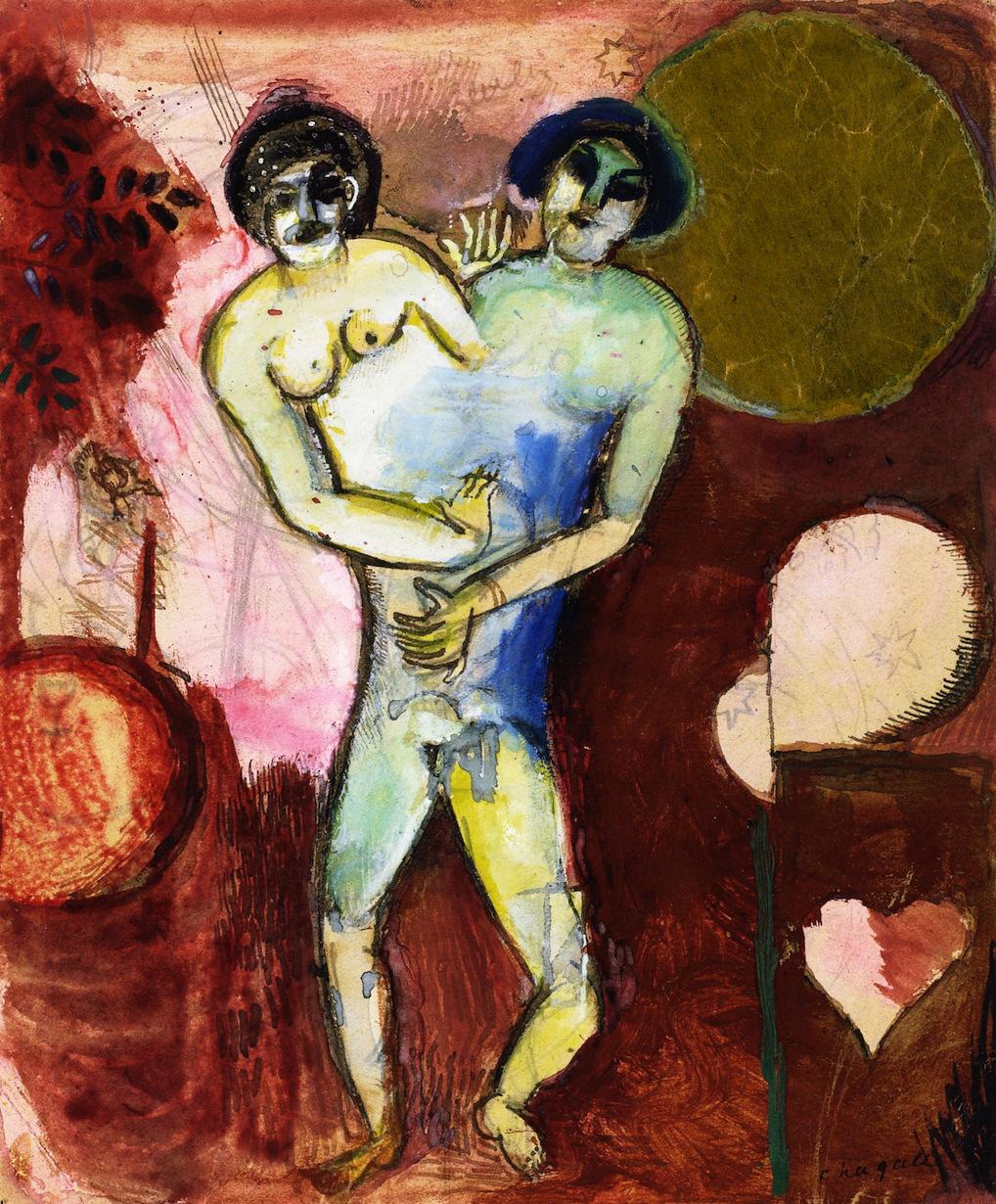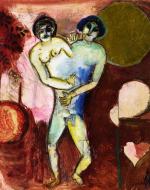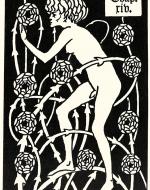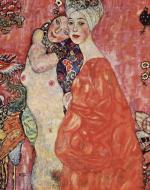Created by Paige McCusker on Sat, 02/17/2024 - 21:03
Description:
Beardsley, Aubrey. Hermaphrodite Among the Roses. 1894. https://www.wikiart.org/en/aubrey-beardsley/not_detected_245638.
Chagall, Marc. Hommage à Apollinaire or Adam et Eve. 1911-1912. https://upload.wikimedia.org/wikipedia/en/a/a8/Marc_Chagall%2C_1911-12%2....
Klimt, Gustav. The Women Friends. 1916-1917. https://www.wikiart.org/en/gustav-klimt/the-women-friends-1917.
Display explanation: This is an exhibit celebrating the oddities in sex, both in the Biblical sense and in the biological sense, beginning with Chagall's painting of Adam and Eve, to Beardsley's art depicting an intersex person, and ending with Klimt's depiction of a lesbian relationship.
Chagall's other subject matter focuses on Judaism and his Jewish roots, and his painting of Adam and Eve is no different. Midrash (Jewish exegesis) teaches that who we know now as Adam and Eve were created as parts of the same whole and then separated into different bodies. By painting these two pivotal religious figures as intersex, Chagall in a sense normalizes intersex conditions. When we take this creation account literally, if Eve is the mother of all humans, and Adam is the father of all men, are intersex people equally venerable? Take Beardsley's Hermaphrodite Among the Roses, where he paints an intersex person surrounded by roses. Roses, when given to another person, symbolize love of all kinds (platonic, romantic), innocence, purity, mystery; and also the goddess of love Aphrodite, Judaism, and the Virgin Mary. (This is where "rosary" gets its root word.) Beardsley was primarily a satirist of Victorian ideals about women and their role in society, sex, and respectability, and depicts "the grotesque" without flinching; when he chooses to depict an intersex person surrounded by roses, he places intersex people in the context of purity and love. I say that he is successfully lampshading how we conceive of (biological) sex by placing people who undergo irreversible surgeries, many of which are done without informed consent, among something related to a woman celebrated for her pureness.
The final painting is Klimt's The Women Friends, which depicts a lesbian relationship. Many depictions of lesbians can be needlessly sexualized, but Klimt doesn't do that. One of them is naked, certainly, but it is not in an overtly sexual manner. Both of the women look at us as we look at them. Some might avert their eyes, but not these two. Looking back challenges the viewer. To paraphrase from gustav-klimt.com, the two women take a sort of yin-yang position in which they occupy two different "spaces" - one clothed, the other not; where one lacks for clothes she has animals and more detail in the background and her partner doesn't. The Women Friends is not Klimt's only foray into painting women as people in charge of their sexuality; indeed, this painting comes after he begins painting famous femme fatales like Judith holding the head of Holofernes.
What drew me to all these pictures was partially the subject matter but also the space - each subject is placed in the center, and they all stand out against the background. Chagall’s work may use more color, but he still directs our eye to the center. And similarly to Adam and Eve, Klimt uses symmetry to silhouette the subjects. As we look upon the naked partner in The Women Friends, we see animals and something draping over her neck to draw our eyes up, and as we look at the clothed partner, we see less stuff in the background. Beardsley’s person is also placed in the center, silhouetted by roses; though they don't own that we are looking at them. Instead they look away.
Installation note: My installation is set up in the same general area as the modernist exhibit(s). The room is 10 foot by 10 foot, and is set up so the paintings are on the three walls and arranged in the order of Chagall, Beardsley, and Klimt (left to right) in gold frames. The paintings are in this order to create a sort of sandwich of color, even though it’s out of chronological and alphabetical order. Next to those paintings would be plaques that discuss the artist, their influences, and their life. The wall is painted a very light orange (#ffe0a6) to keep your eyes on the paintings. The floor is dark brown wood. The paintings are hung on the wall, about 57 inches off the floor at center line. (Hopefully it is wheelchair accessible.) The lighting is provided by suspension lights, specifically Puritan’s ANT-1314 lights. I intentionally chose an Art Nouveau style light because Klimt and Beardsley were both affiliated with that style. (Chagall leaned more toward modernism, but there was quite a bit of overlap in terms of art and decoration styles at the time.) As for furniture, there will be benches spaced around the room in a sort of upside-down “U” shape, and those benches are Gustav Siegel’s benches made for Josef and Jacob Kohn. (The benches are also in the style of Art Nouveau.)
As for the auditory part of this exhibit, I want Tchaikovsky’s Variations on a Rococo Theme playing in the background, if not one of his concertos (or Waltz of the Flowers, for some humor). I chose specifically classical music to not distract from the painting, and Tchaikovsky in particular because he was more than likely gay, keeping with the theme of celebrating LGBTQ+ and intersex people. He was also a (Late) Romantic composer, and the Romantic movement in music is characterized by a fascination with the spiritual, what we find scary, and a preoccupation with the outdoors—the spiritual and the outdoors are both mirrored here with Adam et Eve and Hermaphrodite, respectively. His themes are also very emotionally vivid, in keeping with Romantic tradition—writing from the heart, in other words. (Romantic tradition is part of the Counter-Enlightenment, questioning the increasing secularization of society and the belief in an ultimately rational human being.) Other acceptable composers include Strauss, who composed an opera for Oscar Wilde’s Salome; and Rachmanioff, who was greatly influenced by Tchaikovsky. Both of these composers are late Romantic and early Modern, which spans from the 1890s to the mid-late 1910s. This is also the time period of the previously named paintings and decorations in the room.
All the previously mentioned ornamentation will hopefully fulfill the goal of feeling like you are stepping back in time and viewing these paintings through the lens of novelty. The room is purposefully slightly sparse to keep your eyes on the paintings, not to overwhelm museum patrons with too many visual or auditory experiences. The paintings are meant to be seen as three parts of one whole.
Copyright:
Associated Place(s)
Featured in Exhibit:
Artist:
- Multiple Artists




